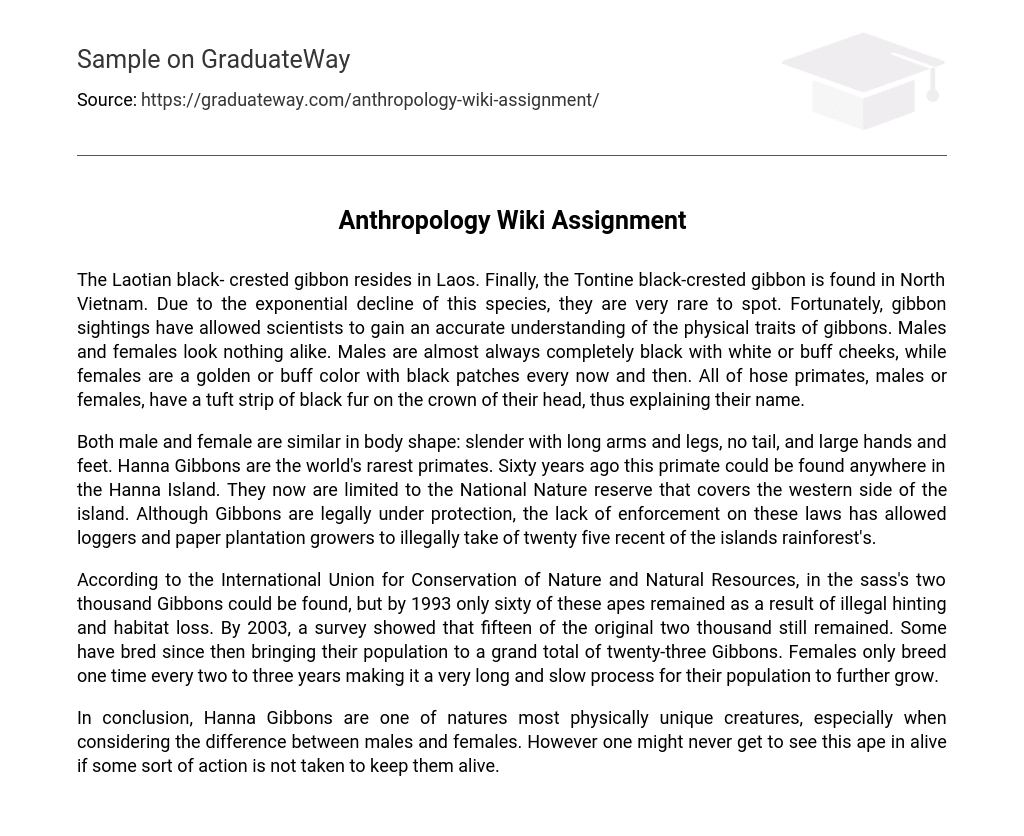The Laotian black- crested gibbon resides in Laos. Finally, the Tontine black-crested gibbon is found in North Vietnam. Due to the exponential decline of this species, they are very rare to spot. Fortunately, gibbon sightings have allowed scientists to gain an accurate understanding of the physical traits of gibbons. Males and females look nothing alike. Males are almost always completely black with white or buff cheeks, while females are a golden or buff color with black patches every now and then. All of hose primates, males or females, have a tuft strip of black fur on the crown of their head, thus explaining their name.
Both male and female are similar in body shape: slender with long arms and legs, no tail, and large hands and feet. Hanna Gibbons are the world’s rarest primates. Sixty years ago this primate could be found anywhere in the Hanna Island. They now are limited to the National Nature reserve that covers the western side of the island. Although Gibbons are legally under protection, the lack of enforcement on these laws has allowed loggers and paper plantation growers to illegally take of twenty five recent of the islands rainforest’s.
According to the International Union for Conservation of Nature and Natural Resources, in the sass’s two thousand Gibbons could be found, but by 1993 only sixty of these apes remained as a result of illegal hinting and habitat loss. By 2003, a survey showed that fifteen of the original two thousand still remained. Some have bred since then bringing their population to a grand total of twenty-three Gibbons. Females only breed one time every two to three years making it a very long and slow process for their population to further grow.
In conclusion, Hanna Gibbons are one of natures most physically unique creatures, especially when considering the difference between males and females. However one might never get to see this ape in alive if some sort of action is not taken to keep them alive.





